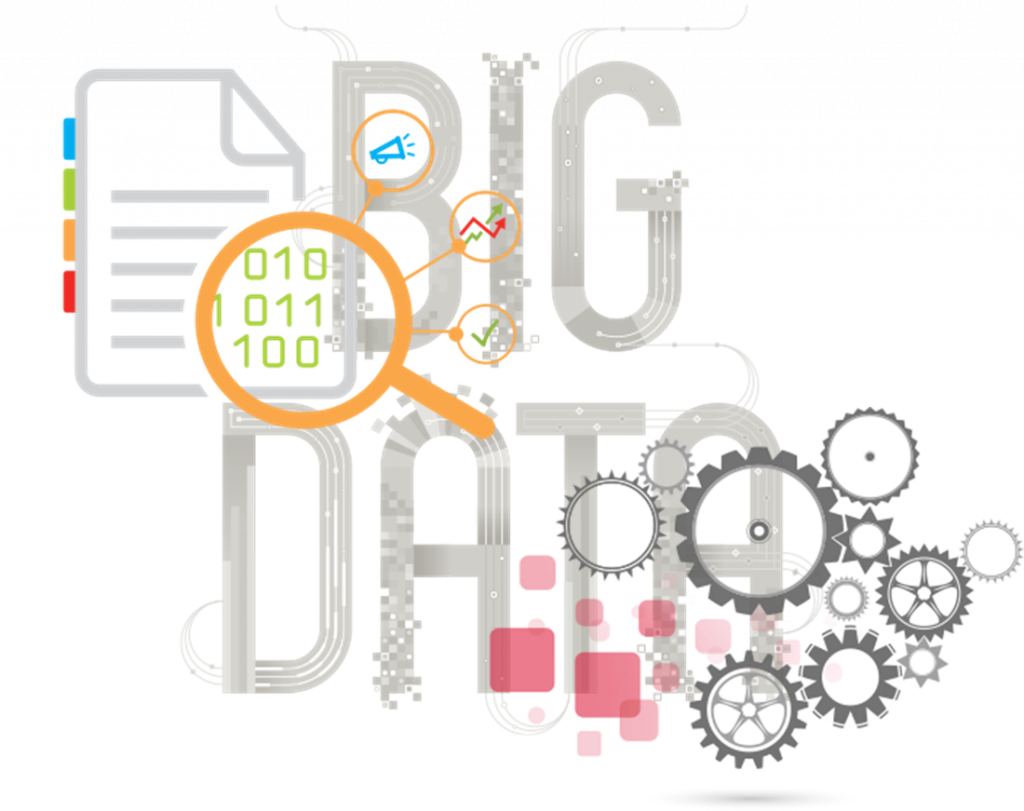For years business executives have understood the potential of big data analytics but have been disappointed when that potential failed to materialize. Alex Bordei (@axbrd), Head of Product Management at Bigstep, explains, “Early adopters and proponents were quick to frame solutions as miraculous reservoirs of insight and functionality. However, big data has not met many C-level executives’ expectations. This disconnect has many executives delaying projects, filing end-to-end big data solutions under ‘perhaps, in the future’.”[1] Part of the problem has been a lack of understanding about what big data and advanced analytics can do and difficulties matching the right analytical approach to specific business challenges. Today, big data and advanced analytics are most often tied to cognitive technologies (aka artificial intelligence (AI) systems) with embedded analytic suites. Bordei explains, “Increasing interest and investment in distributed computing, AI, machine learning and IoT are generating practical and user-friendly tools for ingesting, storing, processing, analyzing and visualizing data.” Erik Peterson, Managing Director of the Global Business Policy Council at A.T. Kearney, reports a recent survey found, “Fully 71 percent of executives expect AI to have ‘transformative effects for economic growth and competitiveness’ over the next 12 months.”[2] While acknowledging the long-term potential of AI, Peterson cautions, “Executives may need to temper their expectations for the short-term implications of AI.”
Types of analytics
When business executives understand the different types of analytics available and what their capabilities are, they are better able to match analytic models to business challenges. Most analysts point to four different types of analytics available today. They are:
Descriptive Analytics. Alexander Bekker, Head of Database and BI Department at ScienceSoft, notes descriptive analytics is the simplest analytics to conduct and answers the question of “what happened.”[3] He adds, “Descriptive analytics juggles raw data from multiple data sources to give valuable insights into the past. However, these findings simply signal that something is wrong or right, without explaining why. For this reason, highly data-driven companies do not content themselves with descriptive analytics only, and prefer combining it with other types of data analytics.”
Diagnostic Analytics. Diagnostic analytics, Bekker notes, allows a company to use historical data, measured against other data, to answer the question of “why something happened.” He explains, “Thanks to diagnostic analytics, there is a possibility to drill down, to find out dependencies and to identify patterns. Companies go for diagnostic analytics, as it gives a deep insight into a particular problem.”
Predictive Analytics. “Predictive analytics,” Bekker writes, “tells what is likely to happen. It uses the findings of descriptive and diagnostic analytics to detect tendencies, clusters and exceptions, and to predict future trends, which makes it a valuable tool for forecasting.” David Weldon (@DWeldon646), editor in chief of Information Management, notes, “As businesses look to cash in on the hype of predictive analytics, artificial intelligence is becoming one of the main drivers behind those efforts.”[4] John Crupi, vice president of IoT analytics at Greenwave Systems, told Weldon predictive analytics can pay big benefits in the area of preventive maintenance. He explained, “AI models can continuously learn as more data arrives and the models refined to achieve increasing accurate results. Predicting abnormalities in minutes or hours in advance can save companies millions of dollars by avoiding catastrophic failures and downtime.”
Prescriptive Analytics. “The purpose of prescriptive analytics,” writes Bekker, “is to literally prescribe what action to take to eliminate a future problem or take full advantage of a promising trend.” Mark van Rijmenam (@VanRijmenam), founder of Datafloq, writes, “Prescriptive analytics comes with some benefits you can leverage with Big Data, such as enhanced awareness of the impact of new technologies or techniques, improved utilization of resources and increased insight into patterns and habits of consumers. For example, you can use prescriptive analytics to determine the best social media engagement opportunities to take.”[5] He adds, “The future of prescriptive analytics will facilitate further analytical development for automated analytics where it replaces the need of human decision-making with automated decision-making for businesses. … With the expanding use and value of prescriptive analytics, it is driving the future of Big Data. Enterprise leaders can avoid risky business moves and reduce financial losses with the power of prescriptive analytics to evolve the logic of their business decisions. When you incorporate prescriptive analytics in your Big Data strategy, it can help you make business decisions faster to enhance efficiency and productivity of your enterprise.”
Advanced analytics and the future of business
Identifying business pain points and figuring out how cognitive technologies and advanced analytics can ease the pain is a critical first step to achieving long-anticipated results. Peterson notes, “AI is already being deployed in a range of arenas, from digital assistants and self-driving cars to predictive analytics software providing early detection of diseases or recommending consumer goods based on shopping habits. A recent Gartner study finds that AI will generate $1.2 trillion in business value in 2018 — a striking 70 percent increase over last year. According to Gartner, the number could swell to close to $4 trillion by 2022.” So why did he suggest tempering short-term expectations? Like most new endeavors, growing pains can be expected and, Peterson notes, AI remains in its infancy. Fortunately, analytics packages are becoming more mature every day. Van Rijmenam notes, “Analytics has become a prerequisite for competitive advantage.”[6] He goes on to suggest nine ways companies can apply analytics today. They are:
1. Developing a 360-degree customer view: Van Rijmenam asserts, “Developing a complete view of your customer is important for every organization, as it helps to understand what your customer wants, what the needs and preferences are and how the customer has to be approached.”
2. Understanding the market: “When you mix different data sets such as sales data, market news data and social media data,” van Rijmenam explains, “you can get real-time insights what the market thinks of your product and when you launch for example a new commercial, you can get insights in real-time how it is perceived.”
3. Finding new markets: “Analyzing various data sources such as web statistics, and social media can help you find new markets or customers with latent needs that you were not aware of. Using techniques such as Natural Language Processing (NLP) or machine learning you will be able to anticipate better what (potential) customers are looking for, which could result in finding completely new markets.”
4. Personalizing websites/offerings: “Today it is all about relevancy and offering the right product/service to the right person for the right price via the right channel at the right moment in time.”
5. Improving your service: “Using analytics, you can optimize your customer service, resulting in happier customers.”
6. Co-creating and innovating: “Analytics not only provides you with insights about your customers but can also give you information regarding the products and how these are being used. When you are capable of monitoring how the product is being used via sensors and telematics, you gain a deep understanding of how you can improve the product. In addition, simulation analysis using massive amounts of data and supercomputers will enable you to drastically speed-up the innovation of your products.”
7. Reducing risk/fraud: “Analytics can help you with detecting anomalies and outliers. These anomalies and outliers could indicate fraudulent actions.”
8. Improving processes: Few people enjoy doing routine, tedious work. Robotic process automation can relieve employees of many of these tasks and, with the addition of cognitive capabilities, some of those tasks can actually undergo continuous improvement.
9. Understanding the competition: “When you monitor the pricing strategy of your competitor, analytics can inform you in real-time when they adjust pricing, allowing you to respond faster.”
Bordei concludes, “By intelligently leveraging powerful big data and cloud technologies, businesses can now gain benefits that, only a few years ago, would have completely eluded them due to the rigid, resource-intensive and time-consuming conundrum that big data used to be.” Van Rijmenam adds, “Only when you have access to insights created using descriptive, predictive or prescriptive analytics will you be able to understand the fast-changing environment your organization operates in. When applying analytics, it will allow you to understand your customers better, improve your products and service and better run your organizations. Without these insights, you will simply be left behind by organizations with a better understanding. Don’t wait, start analyzing today.”
Footnotes
[1] Alex Bordei, “The Data Pipeline — Analytics at the Speed of Business,” Dataconomy, 10 April 2017.
[2] Erik Peterson, “Many firms need more evidence of full benefits of artificial intelligence,” Information Management, 13 November 2018.
[3] Alexander Bekker, “4 types of data analytics to improve decision-making,” ScienceSoft, 11 July 2017.
[4] David Weldon, “AI may hold the key to success with predictive analytics,” Information Management, 14 February 2018.
[5] Mark van Rijmenam, “Why Prescriptive Analytics Is the Future of Big Data,” Datafloq, 5 October 2017.
[6] Mark van Rijmenam, “9 Ways to Incorporate Analytics Into Your Organisation,” Datafloq, 8 November 2018.





